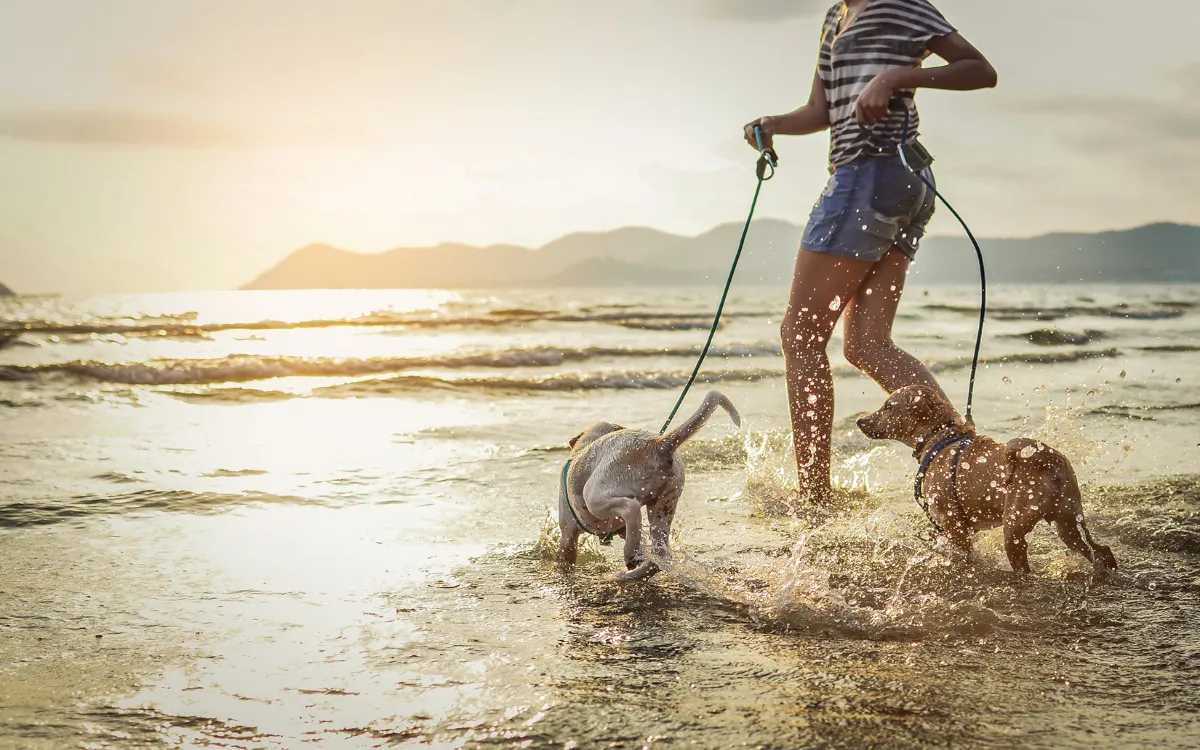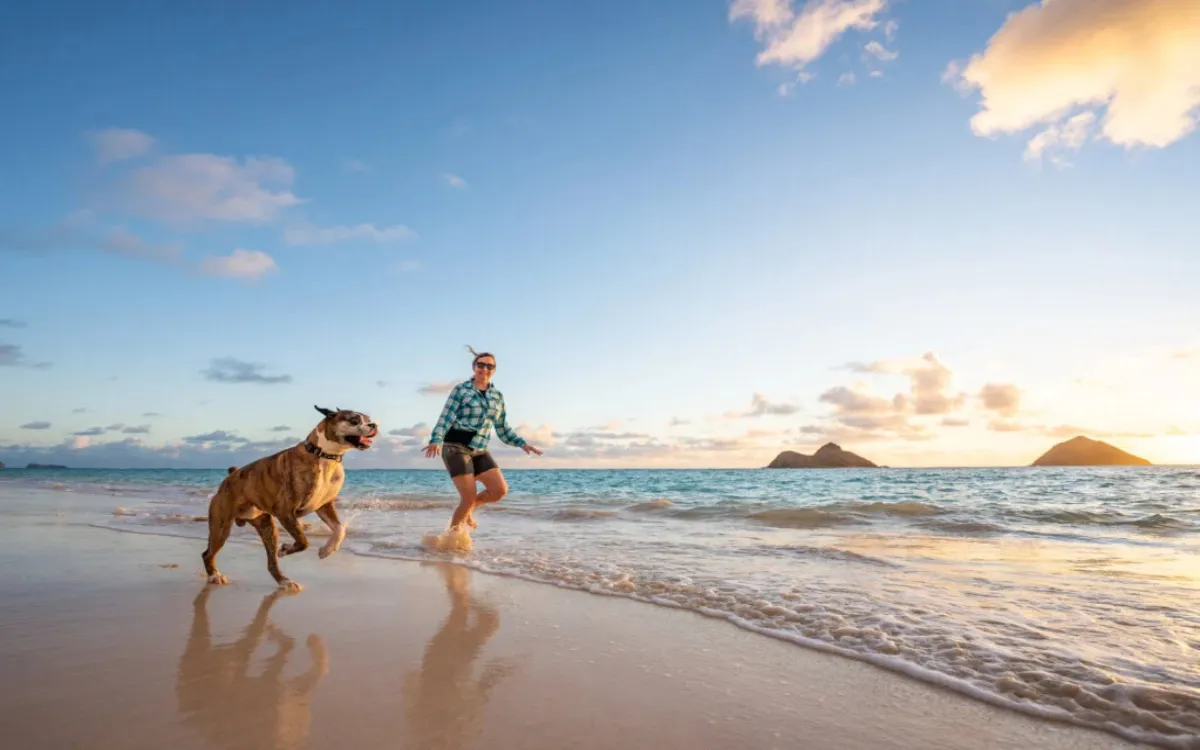Discover Mauka Warriors Luau Wahiawa, the former location full of memories. Now Mauka has moved to Coral Crater Adventure Park with an upgraded experience.
Hawaii has long been known as a travel paradise, with turquoise seas, white sand beaches, and some of the most unique cultural experiences in the world. However, if you plan to bring your four-legged companion along, keep in mind that Hawaii is also the U.S. state with the strictest pet quarantine regulations. You’ll need to prepare all the necessary paperwork carefully to ensure a smooth journey with your dog (or cat).
Does Hawaii allow dogs (and cats) to travel there?
The answer is yes. But the entry requirements for dogs and cats are extremely strict. The reason is simple but crucial: Hawaii is the only state in the U.S. that is completely rabies-free, and its government must protect this status at all costs to safeguard both the ecosystem and public health. This means you cannot just casually bring your dog without advance preparation. That said, the good news is that traveling to Hawaii with pets is entirely possible so long as you know the regulations and complete all necessary steps. With proper preparation, you and your dog can still enjoy a full vacation on the island, where both humans and pets alike have space to explore and relax.

A dog is also welcomed with a lei when arriving in Hawaii
Pet travel policies in Hawaii
Unlike most other U.S. states, Hawaii has its own quarantine system for pets, called the Animal Quarantine Program (AQS). This program is mandatory for all dogs and cats entering the islands, with the goal of absolutely preventing rabies from being introduced. Technically, Hawaii does allow visitors to bring dogs, but if the paperwork is not in order, the pet may be quarantined for up to 120 days. That is both expensive and stressful for both owner and pet.
To simplify the process, the government has created several options. If all paperwork is in order, vaccinations are up to date, and rabies testing is satisfactory, dogs may qualify for the Direct Release at Airport program. This means they only have to undergo a few hours of testing at the airport before being returned to their owners.

This dog is enjoying the summer in Hawaii
Another option is the 5 Days or Less program, in which pets may be held for no more than five days before reuniting with their owners. If requirements are not met, the final option is the 120 Days Quarantine, which means the dog must stay at the quarantine facility for four months. Clearly, Hawaii’s policies are strict, but also flexible: with good preparation, your dog can clear entry smoothly and begin the adventure alongside you right from day one.
Documents and procedures required
For a dog to legally and safely set foot in Hawaii, medical and quarantine paperwork is essential. First, you’ll need proof of rabies vaccination, showing that the dog has received two rabies shots as required. The shots must be spaced at least 30 days apart, and the second dose must still be valid at the time of entry. Next, your dog must undergo the FAVN blood test (rabies antibody test), which measures antibody levels against rabies. Only results sent to Hawaii-approved labs, directly forwarded to AQS, are accepted.

Dog must be microchipped before vaccination and testing
Another mandatory requirement is microchipping. Your pet must be microchipped before vaccination and testing, ensuring that the records match the animal’s identity. Additionally, within 14 days before the flight, you’ll need a health certificate issued by a licensed veterinarian confirming that your dog is fit for long-distance travel and free from contagious diseases. Finally, the entire set of documents must be registered with AQS at least 30 days before the flight for approval. Submitting late almost certainly means your dog will be sent into a long quarantine. In other words, paperwork is not just formality, it decides whether your pet can be released at the airport and join you in exploring Hawaii right away.
Necessary costs
The cost of bringing a dog to Hawaii often surprises travelers, as it goes far beyond just an airline ticket. First, you must pay quarantine and processing fees for the AQS program. If the paperwork is flawless and you qualify for Direct Release (pet released directly at the airport), the fee is about $185. If extra processing time is needed and the dog stays under the 5 Days or Less program, the fee rises to around $244. Failure to qualify means being forced into the 120 Days Quarantine, which costs over $1,000 excluding food and care expenses during that period.

Your dog will surely enjoy the vast nature of Hawaii
On top of that, you must account for air transportation costs. This varies by airline and method: small dogs that qualify to travel in-cabin may cost around $100–$150 per flight, while larger pets checked in a special cargo hold may cost $250–$500 or more. Some airlines charge additional fees for long-haul or connecting flights. Altogether, bringing a dog to Hawaii can cost as much as, or even more than, a standard economy-class human ticket. Still, many owners consider it a worthwhile investment, as it means sharing the journey with their loyal companion in paradise.
Choosing the right airline
Once the paperwork is complete, the next step is choosing an airline to ensure a safe and smooth journey. Not all airlines are pet-friendly, and not all flights allow pets. In the U.S., the most commonly used carriers for Hawaii are Hawaiian Airlines and Alaska Airlines, as both have clear procedures and regularly transport pets to the islands.
Hawaiian Airlines allows small pets (under about 25 lbs/11 kg, including the carrier) in the cabin, provided they are in an airline-approved carrier that fits under the seat. Larger pets must travel in the climate- and pressure-controlled cargo hold. Alaska Airlines has similar rules, though fees and weight limits may differ, so it’s best to check the airline’s official website before booking.

Book your flights early if you plan to bring your dog
Note that flights usually allow only 3–5 pets per cabin, so reservations should be made early. Carriers must meet IATA standards: sturdy, well-ventilated, lockable, and large enough for the dog to stand, turn around, and lie comfortably. Always label the carrier with your contact information and the dog’s name, and attach a water dispenser bottle in case of delays. Some airlines may also require you to sign a declaration that the pet has been health-checked and is fit to fly. Choosing the right airline and preparing properly ensures your pet steps off the plane healthy and ready to explore Hawaii.
Choosing pet-friendly accommodations
Once you arrive in Hawaii with your dog, finding the right place to stay is essential for comfort. The good news is that more and more hotels, resorts, and Airbnbs on islands like Oʻahu, Maui, and the Big Island are opening their doors to guests with pets.
On Oʻahu, for instance, some beachfront resorts not only allow dogs but even provide grassy areas for morning walks. On Airbnb, you can easily filter for “pet-friendly” apartments or villas, offering both privacy and comfort compared to hotels. Some hotels even offer special pet services: beds, bowls, dog menus, and even pet-sitting when you join activities where dogs aren’t allowed.

Ask the hotel before booking
Of course, always check each property’s policies and fees before booking. Some places are free, while others charge $50–$100 per night depending on the dog’s size. To be a responsible guest, bring waste bags, prevent excessive barking, and ensure your dog doesn’t disturb others. A pet-friendly stay not only makes your trip smoother but also turns your Hawaiian vacation into a complete experience where your dog is treated like a true “member” of the trip.
Safety tips when bringing dogs (and cats)
Beyond paperwork and planning, ensuring your pet’s safety is equally important when traveling to Hawaii. Never allow your dog to interact with wildlife like sea turtles, seabirds, or resting monk seals; this violates Hawaii’s strict conservation laws and can lead to heavy fines.
Be mindful of the weather: Hawaii can get extremely hot, especially midday, and sand can burn your dog’s paws. Take them out only in the early morning or late afternoon, always carry water, and let them rest in the shade when needed.
Always clean up after your pet, leave no waste on beaches or in parks. Hawaii’s tropical climate also means mosquitoes and ticks can be a nuisance, so bring repellents and a small first-aid kit. Finally, keep your dog leashed at all times to prevent them from running into forests or hazardous areas. These small safety steps are key to ensuring a fun, complete trip while respecting Hawaii’s fragile natural environment.
Hawaii truly is a paradise, but making it a memorable experience for both you and your dog requires careful preparation. From understanding strict quarantine policies and preparing full medical records, to budgeting costs, choosing the right airline, booking pet-friendly accommodations, and planning pet-appropriate activities. Every detail contributes to a seamless trip.
Alongside the joy of running with your furry friend on white-sand beaches or strolling in lush green parks, you’ll also embody the spirit of a responsible traveler by respecting Hawaii’s conservation rules. The process of bringing a dog to Hawaii may not be simple, but the priceless moments of happiness you share together in paradise make every effort and expense worthwhile.
And to make your Hawaiian trip even more complete, and to explore the roots of Hawaiian cultural traditions in the most authentic way, we suggest joining the Mauka Warriors Luau, an unique luau unlike any other on Oʻahu. Learn more here.






